


Daisy [aka Margaret Mary] Partleton (1905-1965)
Part II

This is a continuation from Part I of the story of Daisy aka Margaret Mary Partleton's life. Click here to see Part I.
To summarise, Daisy was born into profound poverty in the year 1905 in Bridgetown, Barbados.
When Daisy was 3½ years old, in June 1909, Barbados was visited by Mrs M S Dalton, who was a patron of a children's home, St Mary's Industrial Home, in Eastleigh near Southampton in England.
By the time Mrs Dalton leaves Barbados, she has Daisy in her care, and she brings her home to England in July 1909. How this came about, we have no information, but it will almost certainly be because she found her in an orphanage in Bridgetown, a little white girl in a predominantly black institution, or perhaps wandering the streets with her hand out begging for food, as her uncle Douglas Partleton had done a decade before, when he was her age.

In the comfort of a 1st-class cabin on the ship above, the RMS Atrato, we have 3½ -year-old Daisy, crossing the Atlantic Ocean with Mrs M S Dalton. Immediately upon arrival at Southampton, she was registered at St Mary's Industrial School, Eastleigh, a Catholic institution in the suburbs of Southampton.
Below we can for the first time step directly into Daisy's shoes, and see St Mary's exactly as she saw it on her first day, 12 July 1909, courtesy of Eastleigh Library who provided this image as a part of their publication St Mary's Industrial Home Eastleigh "The Happy Home" by Linda Glasspool and Catherine Noble.
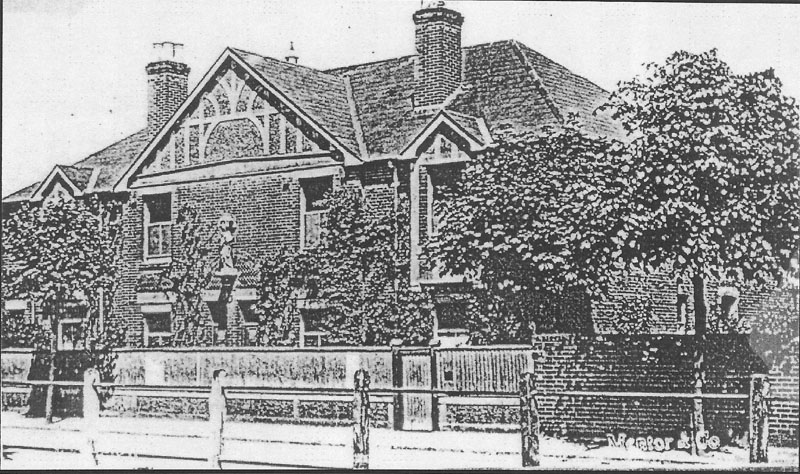
We have to beware of donning rose-tinted glasses with regard to Daisy's situation. England was a foreign country to her, and her West-Indies lilt would certainly have been regarded by the other children as being a very strange accent indeed - one they had never heard before. If she has any family in Barbados, she will never see them again. At least on her arrival in Southampton it was summertime, but it would not be long before she would have to forget the Barbados sunshine and face the bare trees, cold wind and the lash of rain of a British winter.
From here on we will refer to Daisy as Margaret, because it appears that the childrens' home took it upon themselves to change her name, which must have surely been rather upsetting and confusing for the little girl. Why they did this, we can only guess, but any keen gardeners among our gentle readers may have noted that the flower commonly known as the Daisy is formally known as the Marguerite, and I guess they thought that Margaret was more formal and proper as a name for a young lady than Daisy.
St Mary's is in the vicinity of Market Street, Eastleigh, so we can go for a little walk with Margaret because we have a nice picture of Market Street. Hold on tight to her hand:
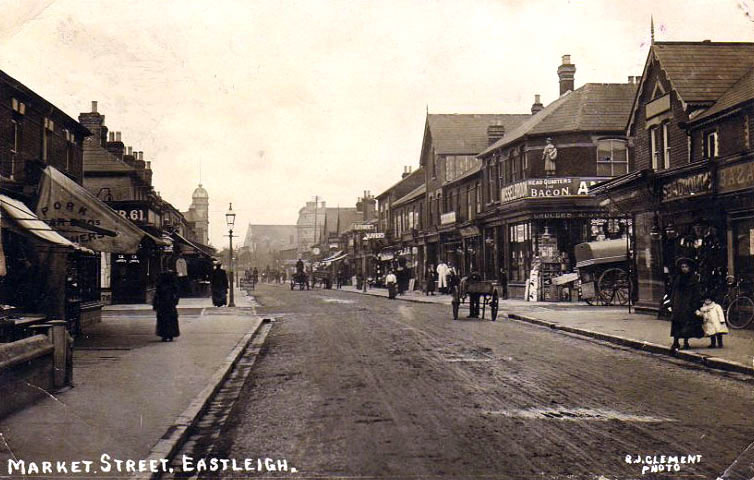
She'd definitely have occasionally shopped in Misselbrook's grocers shop with its unusual statue:

This picture was taken in c1906; three years later, the little mite in shot below, outside Shadbolt's Bazaar, could be Margaret!

Industrial schools such as St Mary's were intended to provide an education to their children which would set them up for a job when they left the institution. In our Margaret's case this training would have been targeted at domestic service.
In the Eastleigh library publication The Happy Home, we discover from the inmates' own accounts that St Mary's was frequently described as a compassionate and caring environment - which is a relief because, as we all know, childrens' homes can often be terrible places. In fact in The Happy Home booklet, we discover some of Margaret's contemporaries.
One of these is Mary Jane Cowler, who was the exact same age as Margaret, entered the home in 1910 - one year after Margaret - and left in 1921. The two girls would have been friends for 11 years!
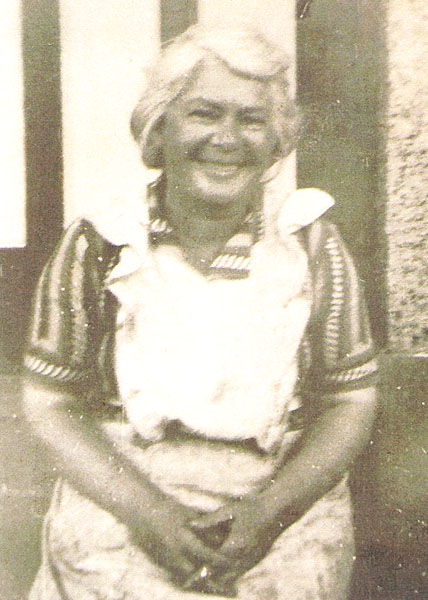 Left: Mary Jane Cowler
Left: Mary Jane Cowler
Another schoolfriend was Helena Josephine Osborne who was also born in 1905, the exact same year as Margaret, and entered the home on 08 October 1915 when her mother died of TB. Margaret and Helena, two 10-year-old girls, would spend the next eight years together in St Mary's, which is a very small institution, so they surely must have been very close indeed.
Helena's daughter Anne gives us a nice insight into life in the home:
"My mother's recollections about the school... the daily lessons were reading, writing, geography, history and spelling. All subjects were taught parrot-fashion, eg country, main town, river. The teachers were very strict but the children were never ill-treated. The only complaint my mother had was that they did not have enough food to eat. The diet was mostly vegetables with bread during the week and a little meat on Sundays."
Both girls left the home in 1923. Whether they maintained contact, we don't know. When Helena left, she went to work for Mrs Dalton as a maid, in Wimbledon - the same Mrs Dalton who had brought Margaret back from Barbados fourteen years earlier. Helena Osborne passed away in 1992 aged 87.
Margaret spent her whole childhood in St Mary's. Did she ever have any communication with her homeland of Barbados? There's no way of knowing, but let's put ourselves in her shoes; surely no day would have gone by without her thinking about her birth mother and even her dad though she probably never knew him. St Mary's records show that she left aged 18 years, on 13 December 1923, "Sent to laundry at Westbury-on-Trym".

The picture we see above is Westbury-on-Trym [near Bristol] town centre in the 1920's. Margaret has left the childrens' home but she has moved on to another Catholic institution. The laundry where Margaret was sent to work is that of St Ursula's Convent; in addition to being a convent, it was a boarding school, a day school and an orphanage in Brecon Road at Westbury. It's set in beautiful grounds and is still going strong as a Catholic school today.
These convents all seem to have operated laundries to keep their inmates usefully occupied. Helena Osborne described the laundry at St Mary's where Margaret would also have worked:
"At the age of 13 the children went to work in the laundry next door. It was hard work washing the clothes, but [ I ] suffered from a skin complaint and was allowed to iron the clothes. Every Saturday the children went out in crocodile fashion to take the clothes to the customers. People would call out: 'Here come the children from the Happy Home'"
We don't know how long Margaret was at her new location at the laundry at St Ursula's, but the next we hear of her, eight years later, she's in London:

Margaret has followed the family tradition and has become an unmarried mum.
There's a lot of information on this birth certificate, of her son, David Neil Partleton, born on 11 August 1931. Let's start with the hospital, Queen Charlotte's on Marylebone Road. Margaret doesn't know it, but life comes round full circle. Queen Charlotte's Hospital, circled blue in the map below, is right next to the church of St Mary Bryanston Square, circled red, where Margaret's great-grandfather Henry Kemp Partleton was married in 1837!
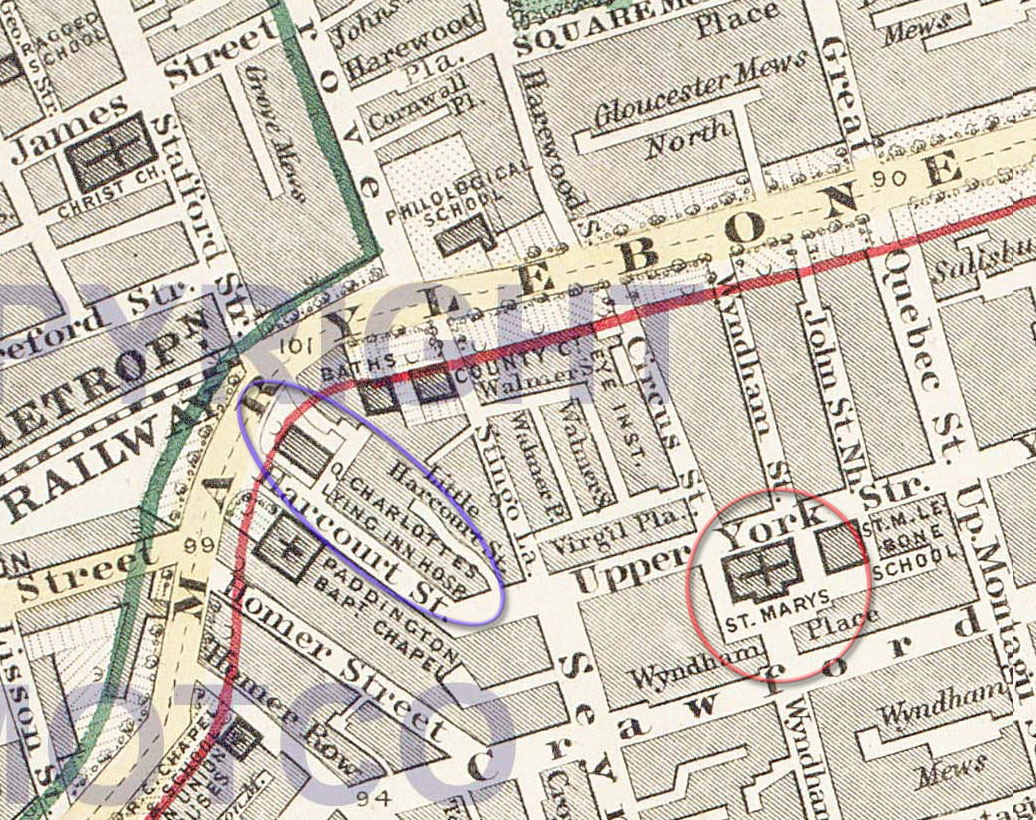
Queen Charlotte's is the oldest and biggest maternity hospital in Britain, founded in 1739. In 1931, the same year when Margaret was there, they placed the following appeal in the British press:

Five or six babies were born every day at the hospital. This picture was taken at Queen Charlotte's in February 1928. Some of these nurses would probably still be there 3 years later when Margaret entered the hospital, and we get a nice view of how they were attired. These five babies born on 29 February 1928, a leap year, have had only had 19 birthdays since!

Queen Charlotte's remained at Marylebone Road until 1940. And - as a reminder to myself - the admittance records, including those of Margaret, are available in the public domain at the London Metropolitan Archives.
The hospital, which moved to Goldhawk Road in 1940, is not just for poor people. Here's Ringo Starr at the birth of his son Zak at Queen Charlotte's on 14 September 1965.

Actor Daniel Radcliffe - better known as Harry Potter - was born at the hospital, as was actress Mischa Barton.
Ok, we've gone off on one of our diversions - let's return to Margaret and the birth of her son David in 1931:

Margaret gives her home address as 34 West Hill, Highgate. This address turns out to be another convent, but not just any convent, so it's time for another diversion, to have a look at this place, which was known as St Pelagia's.
Actually, the full name of the institution was St Pelagia's Home for Penitent Girls, which I think gives us a fairly graphic clue as to its function and its stance on the matter of sex before marriage. It was a Catholic organisation where young girls were sent to hide their pregnancies. Many of these girls were sent over from Ireland, and no doubt friends and relatives were all told that the girl was 'visiting an aunt'. The baby, when born, would be taken away for adoption, again often in Ireland, and the girl would return home as if nothing had happened.
If you search for '34 West Hill Highgate' on the internet, you will find dozens of adopted people desperately searching for their birth mothers having found the address of the convent on their birth certificates. Former mothers sometimes report that they were subjected to severe pressure to give up their babies, though one mother tells that she fought so hard that they let her keep it and she subsequently married the child's father.

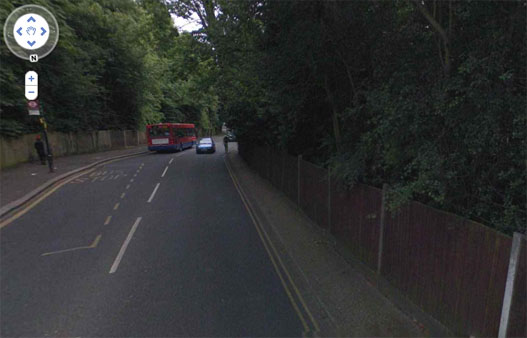
The photos above are Highgate West Hill, old and new, and enable us to step into Margaret's shoes. As you can see, it's fairly leafy and steep. It's a posh area. Poet Laureate Sir John Betjeman had previously lived at No 31, & there's a blue plaque outside his house. In the photos above, we're looking southwards down the hill.
Information reported by the daughter of one of the mums at St Pelagia's says that the mothers were "...treated very well in there. It was like a boarding school & there were 4 girls to a dormitory. There was a kitchen downstairs where the mothers prepared the bottles to feed their babies and also there was a nursery. The grounds apparently were very nice and in the summer the mothers spent a lot of time outdoors."
I couldn't find a picture of St Pelagia's, though photos do exist at the Catholic Children's Society (Westminster). However, in May 2010, we were contacted by Caroline Dolan whose mum had a baby in St Pelagia's in the 1950's. Caroline sent us this picture:
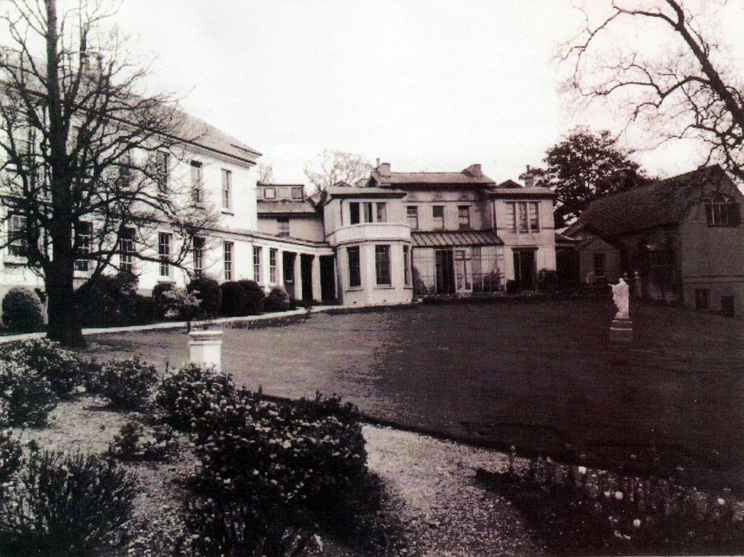
The convent was demolished in 1970. Here's a photo of the flats which replaced it on the steep hillside:
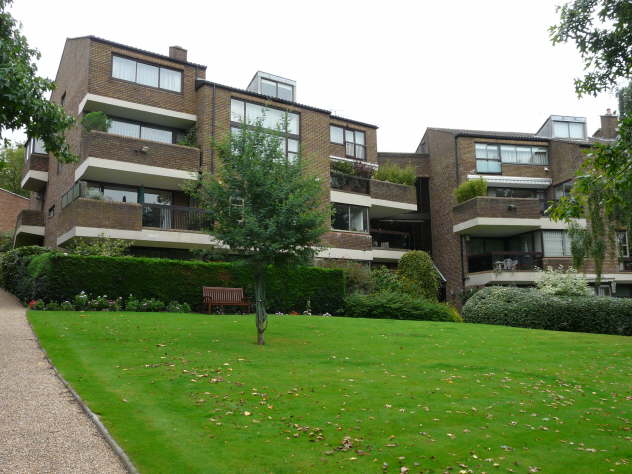
Back in 1931, we may imagine that our 26-year-old Margaret would have faced some fairly intense questioning when she revealed her condition to the nuns! We are well accustomed to unmarried mums receiving welfare in our generation, but back in 1931, Margaret was in a serious situation and probably received very little sympathy. Her future and that of her baby would have been far from certain. However, she did not have any family to return to and was not forced to give up her baby.
As a consequence, we can see, exactly 16 years later, 11 August 1947, a photograph of Margaret and her son David on the occasion of his 16th birthday:

Let's return to that birth certificate:

In 1931 Margaret gave her home address as Highgate West Hill, but she's employed as a domestic servant at 191 Bedford Hill Balham, which is one of the houses in vicinity of the picture below, courtesy of Google Street View:

For those of you who know London, Highgate to Balham is a long way to travel just to earn a domestic servant's wage:

The answer may lie in the Tube map: a direct door-to-door journey on the Northern Line, perhaps.
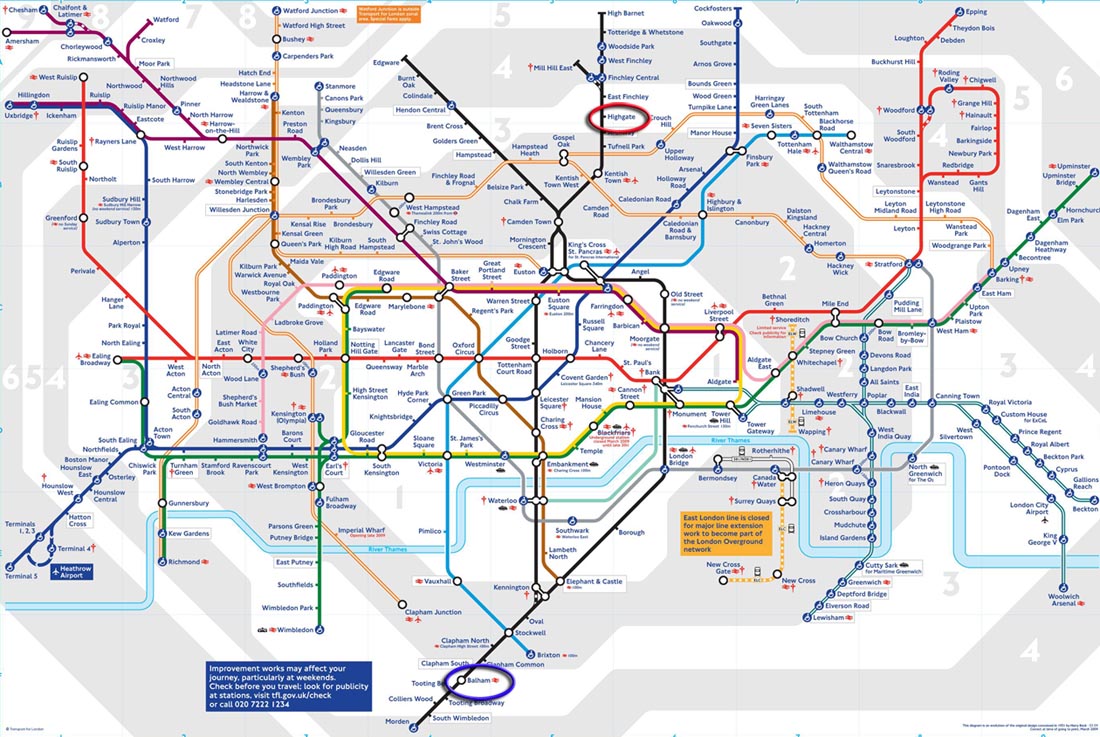
As Margaret's son David grew up, we don't know where they lived, but clearly Margaret retained contact with St Pelagia's because 34 years after the birth of her son, Margaret passed away in 1965, at St Pelagia's where she was still working in the laundry:
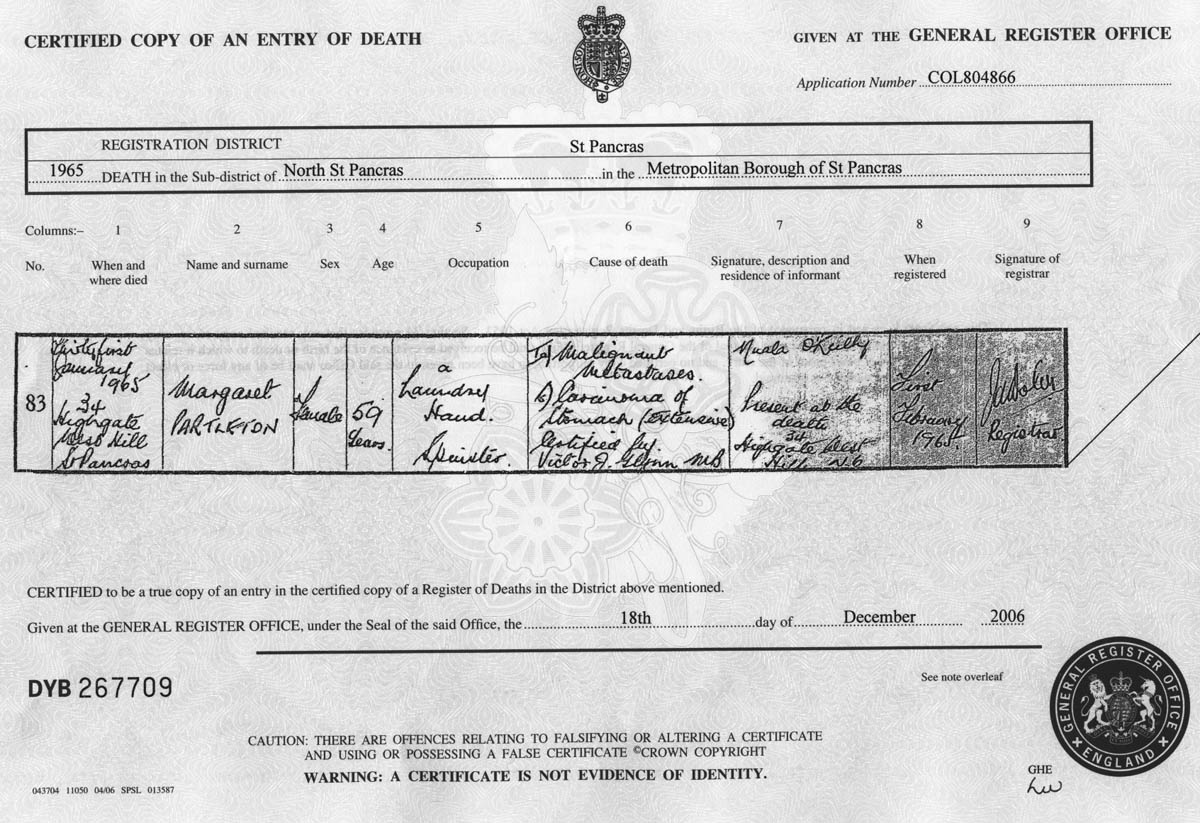
Margaret's son David married, had three children and emigrated to New Zealand, where they still live today. David passed away in 2003.
Margaret Partleton, formerly Daisy Partleton had had a most extraordinary start to her life, born into extreme poverty, the granddaughter of a prostitute, taken from her native land as a toddler, raised in a childrens' home in a foreign land. She found support in the Catholic Church, who enabled her to keep and support her baby. Daisy became Margaret and spent much of her life in institutions, but these were high quality institutions, convents in leafy suburbs with beautiful grounds where she would have found support and companionship.
Margaret and her son David did not speak much of their humble origins in later life, so little in fact that her grandchildren did not even know that she was born in Barbados, which is a shame, because they would have some very interesting stories to tell. However, this gave all of us involved in the research a tremendously interestingly piece of detective work; members of the Partleton family in the USA, the UK and New Zealand all contributing vital pieces of evidence determining the story of Daisy Partleton.
-------------------o0o---------------------- Post Script ---------------------o0o------------------
There don't seem to be any Partletons in Barbados now, though there may be descendants of Henry Partleton through the female line under the name of Collymore or Small or other surnames.
Soooo..... is that the end of the odyssey of the Partleton family in Barbados? The answer is definitely... no!
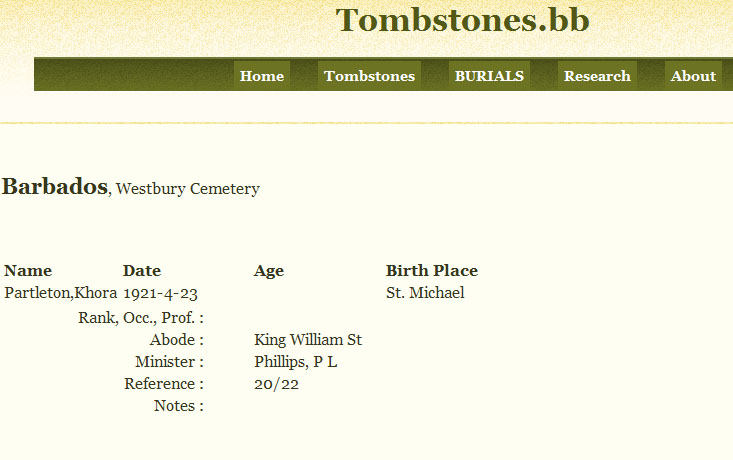
Oh dear, above, we now have a burial in Bridgetown in April 1921.
And what's more, another, less than a month later:

Two deaths in few weeks suggests to me that these two girls are children, but sadly the burial records do not include their ages. Khora and Mildred Partleton both die in King William Street which is circled orange in the map below:
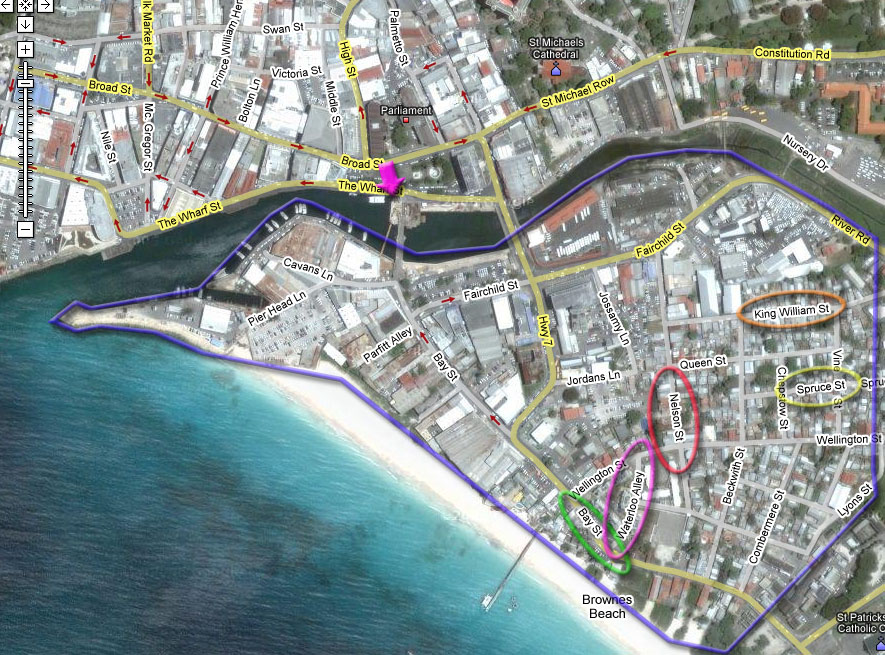
So, in 1921, 20 years after Lilian worked as a prostitute, and 11 years after her death, the Partleton family are still orbiting in the vicinity of Nelson Street. Do we read into this that their trade in prostitution continues? I think the answer is probably, sadly, yes.
Who are Khora and Mildred Partleton?

In 2010, Margaret's grandson David Partleton in New Zealand engaged a genealogist in Bridgetown, Barbados, who confirmed that Khora and Mildred were in fact Margaret's sisters - whom she never met or even knew existed. They are later daughters of Katie, and they both died as children in 1921 when Margaret was still 15 years old in distant England. So it seems quite likely that mum Katie was probably also making her living through prostitution.
The records are far from complete. More research needed here... that's the fun of it all!
Finally, if you've been following this story from the beginning, there is one more tale of Barbados to tell, in many ways the most interesting story of them all, that of Douglas Partleton, the uncle of Daisy Partleton. Click here to read his story... you won't be disappointed!
If you enjoyed reading this page, you are invited to 'Like' us on Facebook. Or click on the Twitter button and follow us, and we'll let you know whenever a new page is added to the Partleton Tree:
Do YOU know any more to add to this web page?... or would you like to discuss any of the history... or if you have any observations or comments... all information is always welcome so why not send us an email to partleton@yahoo.co.uk
Click here to return to the Partleton Tree Home Page
